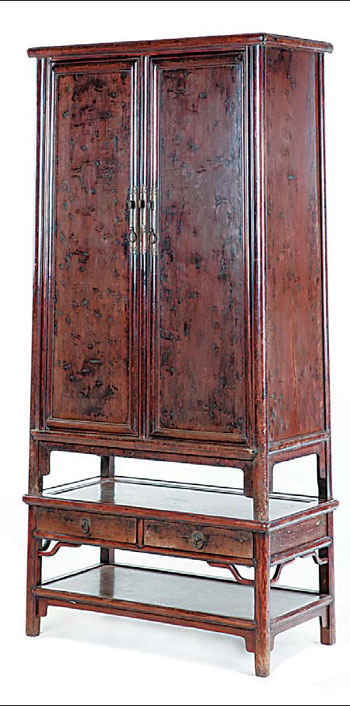
 |
|
A luohan bed sculpted with dragon patterns from the early Qing Dynasty (1644-1911). |
 |
|
A typical Jiangsu-style cabinet. |
The National Museum of China presents furniture made from precious jinsi nanmu, or 'golden thread wood'. Lin Qi discovers this alchemic timber's magic.
A massive swath of trees in Sichuan province's remote mountains was logged about six centuries ago.
Related: Tibetan Buddhist architecture restored to its original glory
But these weren't just any trees that were felled and shipped along the Yangtze River and Beijing-Hangzhou Grand Canal before arriving at the Forbidden City's construction site.
These trees were of the jinsi (golden thread) variety of nanmu - a highly valued type of large, slow-growing evergreen.
They became the Fengtian Palace's pillars. The palace later burned to ashes.
But the inclusion of jinsi nanmu in construction became an imperial custom in the Ming (1368-1644) and Qing (1644-1911) dynasties.
It was also used to make luxury furniture both inside and outside the palace.
An ongoing exhibition at the National Museum of China, which is presented by Nanmu Studio, displays the beauty of jinsi nanmu furniture. It includes nine exquisite antiques from the Ming and Qing periods that are available for public viewing for the first time.
"When ancient carpenters split nanmu, they found the sap inside crystallized and glittered like golden threads in the sun," antique furniture expert Zhang Dexiang says. "That's how it came to be called jinsi."
Jinsi is considered the best nanmu variety.
Its resistance to decay made it a favorite of royal families and dignitaries. It's also easy to carve but doesn't warp easily.
"The wood has a fine, smooth texture," Zhang says.
"It also emits a faint fragrance. The color is pleasant but not very eye-catching. It has all the qualities ancient literati asked for - resilience, freshness and elegance."